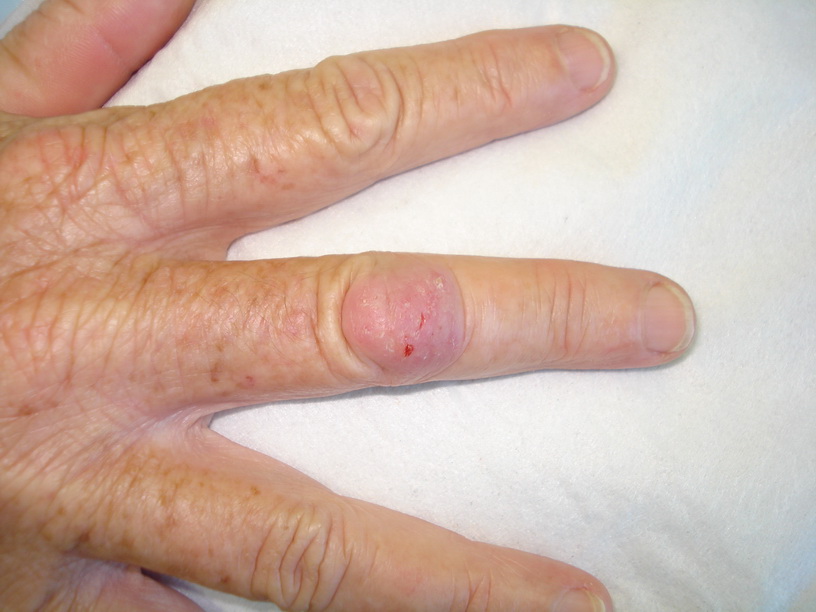

Diagnosis: Sporotrichosis
Description: Slow growing nodule on finger
Morphology: Nodule pink
Site: Finger
Sex: M
Age: 56
Type: Clinical
Submitted By: Ian McColl
Differential DiagnosisHistory:
| The patient has just finished a third course of antibiotics for a presumed infective swelling over the PIP joint of the middle finger with no real benefit. Do not bother prescribing a fourth. This swelling has been present now for 6 months and is more likely to be a deep fungal or atypical mycobacterial infection. Enquire about a fish tank at home for Mycobacterium marinum infection and whether the patient is a keen gardener for Sporotrichosis, a deep fungus found in old wood or mulch. Take a punch biopsy of the lesion for histology looking for granulomas and also send another specimen in an empty container for culture but specify for deep fungi and mycobacteria. The culture may take 6 weeks to grow.
|
Related Links: Global Skinatlas on Sporotrichosis Dermnet on Sporotrichosis |
|
Case Comments [Add Comment] [Subscribe] |
| Follow Up View the relevant Module on this condition
|
| Final Diagnosis
Deep fungal infection |
